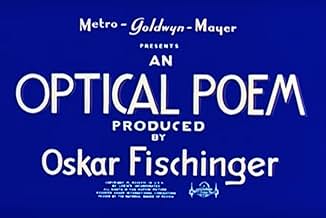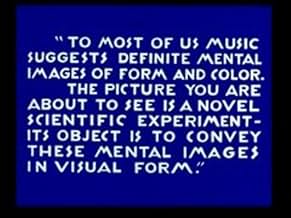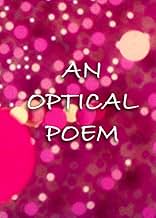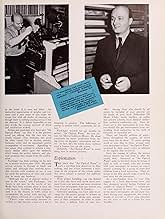Adicionar um enredo no seu idiomaMental imagery of music is visualized with two-dimensional shapes dancing to the rhythm of Franz Liszt's Hungarian Rhapsody No. 2.Mental imagery of music is visualized with two-dimensional shapes dancing to the rhythm of Franz Liszt's Hungarian Rhapsody No. 2.Mental imagery of music is visualized with two-dimensional shapes dancing to the rhythm of Franz Liszt's Hungarian Rhapsody No. 2.
- Direção
Avaliações em destaque
8tavm
After years of favoriting this on YouTube, I finally watched this M-G-M/Oskar Fischinger colored paper-animated short there. Done to the music of Franz Liszt's "Second Hungarian Rhapsody" (the same music Bugs Bunny would play in Rhapsody Rabbit), we see lots of circles, rectangles, and other shapes in space moving and appearing/disappearing to that music. Quite fascinating to watch and maybe it may have been the inspiration for Walt Disney's later feature length Fantasia a few years later. This seemed to be Fischinger's only film work for a major studio. It certainly seemed possibly too avant garde for the tastes of the public of the time! How many even know about this one? Anyway, that's a recommendation for An Optical Poem.
10verbusen
Listed as a 1938 film but perhaps first shown in 1937 since the TCM website states that as the year audiences first viewed An Optical Poem, this was a pioneering animation short. I'm surprised I never watched it before the year 2019, TCM should be showing it more often (and other stop-motion independent shorts from the time). While watching this short I began to think of how it was made. It's using stop motion, taking a picture of the scene and then moving the items in the frame a slight bit at a time and taking another picture and so many thousands of times. TCM has a lot of information about this short. It was done with cut out paper patterns held together by fishing line, no computers back then! It could have been done with animation but when you realize it is being done with stop motion it adds credibility to the degree of work involved in producing the film. MGM, a very conservative studio, paid Oskar Fischinger $11,000 to make the film. Anything he had left over was his to keep. The only problem was there was nothing left over, so Oskar, while he may have wanted to make some money, did this one for the love of his art. It was not widely released and was used as a "prestige" item, playing for high end movie audiences, like as the TCM article states, "first-class ocean-liner passengers". Many at the time thought it would be nominated for an Academy Award (it was not). Mr Fischinger would have a falling out with MGM over the money made from the film that included a physical altercation with MGM staff and his arrest, he would only do 5 more independent shorts before losing interest in film-making and devoting his work to painting instead. MGM, which was using an outside studio before for its animated shorts at the time, the Harmon-Ising studio and their Happy Harmonies series, around the time of An Optical Poem, created their own animation department resulting in many future Oscar winners from the Tom and Jerry franchise. This is the story of An Optical Poem, quite an interesting one not only on how it was made and the level of sophistication it presented in 1937 with its high fidelity sound, brilliant technicolor photography and inspired use of stop motion animation, but for the way mainstream audiences and Hollywood basically rejected it as being too far ahead of its time. For film history buffs it marks an achievement in film making and a time capsule on the social attitudes towards modern artists in the 1930s. 10 of 10.
Just about anyone who's ever made a music video especially an abstract one owes a debt of gratitude to Oskar Fischinger. This short film is a charming rendition of Liszt's Second Hungarian Rhapsody set to a dazzling series of colored dots, lines, flashes and vivid visual effects that often look like a Piet Mondrian painting come to life. Paul Marquardt's often cheeky orchestration far different from the one usually heard adds a quite inventive series of tonal effects to the film that only underscores the rambunctious appeal of Fischinger's animation. I remember seeing films like this from the 1960's and not realizing anyone had done anything this imaginative with the same format thirty years earlier and I can't for the life of me imagine what unsuspecting moviegoers who caught this in 1937 on a program headlined by an MGM feature of the period made of it!
Abstract images float across the field in time to Liszt's Second Hungarian Rhapsody.
Oskar Fischinger had been producing this sort of abstract animation since 1924 in Germany as an outgrowth of the Dadaist movement. He was not the only film maker to at least dabble in this sort of work. Over in England, Len Lye started doing the same thing with the introduction of sound to films, and later, Norman McLaren would make several of his early shorts doing much the same. In fact, a couple of years after this came out, part of FANTASIA would do the same. It was a natural outgrowth of abstract art and program music, in which the music was meant to evoke emotions or scenes or even stories. They didn't call them etudes for no reason, but because they evoked enquiring thoughts. Only with abstract animation like this, the audience was called upon to go its own way, and perhaps afterwards discuss what it was all about.
Pretty colors, though. It reminds me of the days I was part of the light show crew at the Fillmore East.
Oskar Fischinger had been producing this sort of abstract animation since 1924 in Germany as an outgrowth of the Dadaist movement. He was not the only film maker to at least dabble in this sort of work. Over in England, Len Lye started doing the same thing with the introduction of sound to films, and later, Norman McLaren would make several of his early shorts doing much the same. In fact, a couple of years after this came out, part of FANTASIA would do the same. It was a natural outgrowth of abstract art and program music, in which the music was meant to evoke emotions or scenes or even stories. They didn't call them etudes for no reason, but because they evoked enquiring thoughts. Only with abstract animation like this, the audience was called upon to go its own way, and perhaps afterwards discuss what it was all about.
Pretty colors, though. It reminds me of the days I was part of the light show crew at the Fillmore East.
I appreciated the soundtrack more than the abstract art, patterns of balloon-shaped dots that dance across the screen for six minutes while the 2nd Hungarian Rhapsody explodes with musical sounds.
After a few minutes, the short becomes too repetitious to be really novel. In fact, it's the sort of thing the Disney studio was already experimenting with and led to several short subjects, as well as the full-length feature "Fantasia" later on, combining classical music with unique animation.
But this was 1937 and the comparison to Disney was not made at the time. Nevertheless, I found it monotonous to watch and not unique enough, except for the exhilarating classical music performed.
After a few minutes, the short becomes too repetitious to be really novel. In fact, it's the sort of thing the Disney studio was already experimenting with and led to several short subjects, as well as the full-length feature "Fantasia" later on, combining classical music with unique animation.
But this was 1937 and the comparison to Disney was not made at the time. Nevertheless, I found it monotonous to watch and not unique enough, except for the exhilarating classical music performed.
Você sabia?
- CuriosidadesAs this was released two years before "Fantasia," it's reasonable to assume either Disney or someone who worked for him saw this and realized the possibilities of non-narrative animation set to classical music; certainly the "Toccata and Fugue in D Minor" sequence bears a striking similarity.
- Citações
Prologue (Title): To most of us music suggests definite mental images of form and color. The picture you are about to see is a novel scientific experiment - Its object is to convey these mental images in visual form.
Principais escolhas
Faça login para avaliar e ver a lista de recomendações personalizadas
Detalhes
- Data de lançamento
- País de origem
- Idioma
- Também conhecido como
- MGM Miniatures (1937-1938 Season) #5: An Optical Poem
- Empresa de produção
- Consulte mais créditos da empresa na IMDbPro
- Tempo de duração6 minutos
- Proporção
- 1.37 : 1
Contribua para esta página
Sugerir uma alteração ou adicionar conteúdo ausente




















